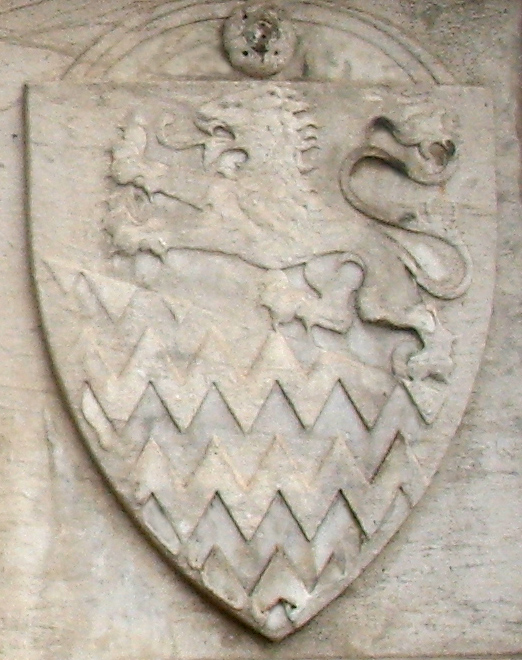
Tourists who visit Florence for the first time only focus on the Duomo, the Accademia Gallery, the Uffizi Gallery, and Piazzale Michelangelo. Sure, those places are a must, and if you are in Florence, you should definitely visit them. But there are other attractions you should dedicate some time to. Like Palazzo Rucellai, a Florentine palace still owned by the descendants of the Rucellai family.
Who is the Rucellai Family
A wealthy family of merchants that started to grow in popularity in the XIII century. It all began with a family member named Alemanno del Giunta, a traveling merchant. The story goes that Alemanno was returning from a long journey from the East when he made a funny discovery.
The man, in fact, stopped in the countryside to take care of his bodily needs. And then, a few moments later, he found out that a particular lichen in contact with urine would turn purple. Amazed by it, the merchant decided to collect some lichens and investigate further in his studio in Florence.

Alemanno wondered if he could use the plant for commercial purposes. And once he discovered it could be used to dye fabrics, he imported lots and lots of lichens into Florence. The plant became popular very quickly, and everyone started calling it oricella. Since the lichen made the merchant’s fortune, the family took the name Oricellari. Some time later, though, they decided to change it into Rucellai.
Although the Rucellai family was quite influential in the 15th century, it became even more prominent as it linked its name with the Medici through marriage. Specifically, the family connection was secured through the marriage of Lucrezia Nannina de’ Medici ( Lorenzo the Magnificent’s older sister) and Bernardo Rucellai in 1466.
Time to go back to Palazzo Rucellai
In short, geometric austerity was in fashion. So, in order to distinguish themselves, wealthy families began to commission palaces where geometry was the protagonist. In short, geometric austerity was in fashion. So, in order to distinguish themselves, wealthy families began to commission palaces where geometry was the protagonist. Palazzo Rucellai was built in the mid-15th century, and it expresses perfectly how powerful the family was. We know, people who are not acquainted with Florence Renaissance may imagine a palace covered in gold. The truth is Palazzo Rucellai is just an elegant square building with facades made of ashlar.
In other words, the outer walls of the building are made of rough stone. Are you wondering why it looks like this? Easy: because, at the time, artists were rediscovering classicism, harmonic forms, and proportions.
The Palace was commissioned by Giovanni di Paolo Rucellai. He was the father of Bernardo Rucellai (we mentioned him earlier on), a merchant, and, most importantly, a humanist and patron of the arts. One of his closest friends, in particular, was Leon Battista Alberti, the key architect of the XV century.
Giovanni di Paolo commissioned Alberti many works, including the construction of Palazzo Rucellai. It should be said that Alberti was only responsible for the architectural design, and the execution was entrusted to Bernardo Rossellino. In any case, Rossellino followed Alberti’s project scrupulously, which is why we can marvel at the architect’s distinctive style. As you can see from the image, the facade is built in modules, and mullioned windows and pilasters alternate perfectly.
Where is the landmark building of the Rucellai family located? Right in the center of Florence, in Via della Vigna Nuova.
More than Palazzo Rucellai
As we have already mentioned, Giovanni di Paolo Rucellai commissioned his friend other projects, both for his family and the city. For example, the architect was asked to design Loggia Rucellai, the facade of Santa Maria Novella church, and Rucellai Sepulchre. The latter is a funerary monument inspired by the architecture of the Holy Sepulcher in Jerusalem. Or rather, it is a reinterpretation of the key sepulcher in Catholic culture in a classical key. It is an ambitious project, as the funerary work is a 1:2 scale of the sacred building and features 30 decorative inlays of white and green marble. Today the tomb holds the remains of Giovanni di Paolo Rucellai, and is kept at the Rucellai Chapel. How to reach the Chapel? You can access it from Marino Marini Museum.
But here is the most intriguing curiosity: during Easter Friday, 30 candles will be placed on the tomb. Don’t worry: it’s just a return to tradition. Candles, in fact, were placed on top of the tomb even in the past to symbolize the miracle of the holy fire in Jerusalem. Would you like to hear our two cents? Since the last lighting took place 500 years ago, if you are in Florence, you should visit the Marini Museum to marvel at this wonder.

Recent Comments